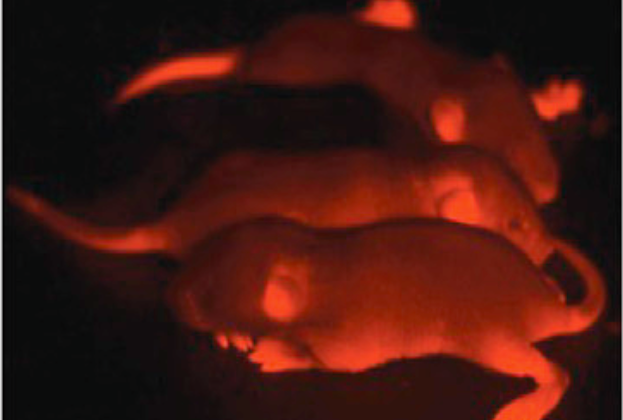
THIS ARTICLE IS MORE THAN FIVE YEARS OLD
This article is more than five years old. Autism research — and science in general — is constantly evolving, so older articles may contain information or theories that have been reevaluated since their original publication date.
Sequencing the whole genomes of individual mouse neurons reveals that each cell carries roughly 100 unique mutations that set it apart from its neighbor. The findings, described 3 March in Neuron, may clarify how so-called ‘somatic mutations,’ which crop up after conception in a subset of the body’s cells, contribute to autism1.
Scientists know little about how somatic mutations in neurons affect brain function. A study of postmortem brain tissue published earlier this year suggests they are enriched in people with autism.
Finding somatic mutations in individual neurons has been difficult because the cells don’t divide. To get enough DNA from a single neuron for sequencing, scientists must rely on enzymes to make extra copies of the neuron’s genome, but the enzymes can introduce errors. What’s more, because the technique uses up all of the neuron’s DNA, no reference genome is available for determining whether a unique mutation in a neuron is real or a copy error.
To sidestep this problem, the new study harnessed the body’s own DNA-duplicating power. The researchers isolated olfactory neurons from mouse brains and removed their nuclei, which carry the cells’ DNA. They then injected the nuclei into a female mouse’s egg cells, which had had their own nuclei removed. The environment of the egg reprograms the DNA to shed its neuronal properties, so it can become any cell in the body.
Neuron to mouse:
The researchers used egg cells containing the DNA of seven neurons from four different mice to generate lines of stem cells. The seven resulting stem cell lines carry the exact DNA seen in the original neurons.
Compared with cells from other tissues, each of the seven neurons carries roughly 100 unique somatic mutations, the researchers found; 10 of the mutations disrupt known genes, including at least four expressed in neurons.
Six of the stem cell lines grew into early-stage embryos, which the researchers transplanted into surrogate mice. Three of the six cell lines developed into living mice. Another line grew into pups that died shortly after birth; embryos from the other two lines died during gestation.
The viable mice prove that the eggs fully reprogrammed the neuronal DNA, the researchers say. Having enough of the mice could allow scientists to probe the effect of individual mutations by examining the mice’s brains.
Only 1 to 2 percent of the modified egg cells developed all the way into a stem cell line, suggesting that the remaining may have harbored severe mutations than prevented them from being viable.
Still, more than half of the egg cells divided at least once, providing one cell for amplification and one that can act as a reference genome. These cells might be the best place to look for severe mutations that could lead to autism, says lead researcher Kristin Baldwin, associate professor of molecular and cellular neuroscience at the Scripps Research Institute in La Jolla, California.
By joining the discussion, you agree to our privacy policy.